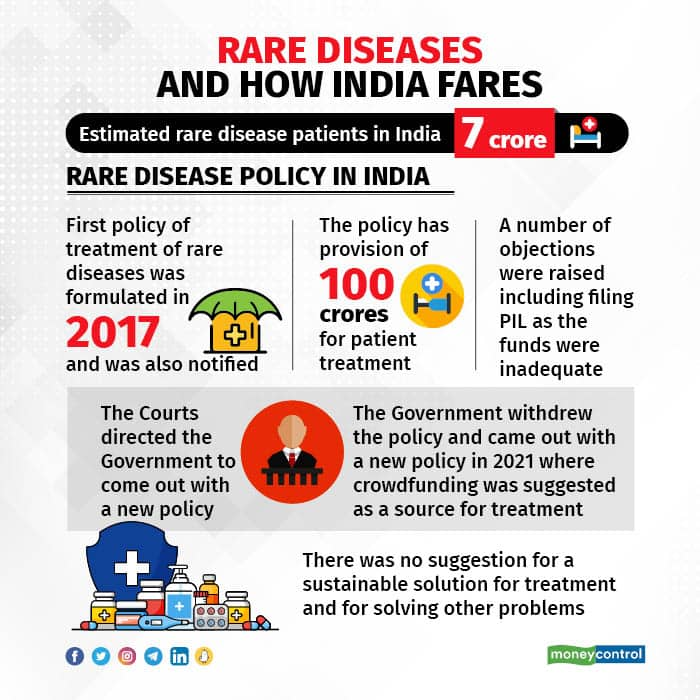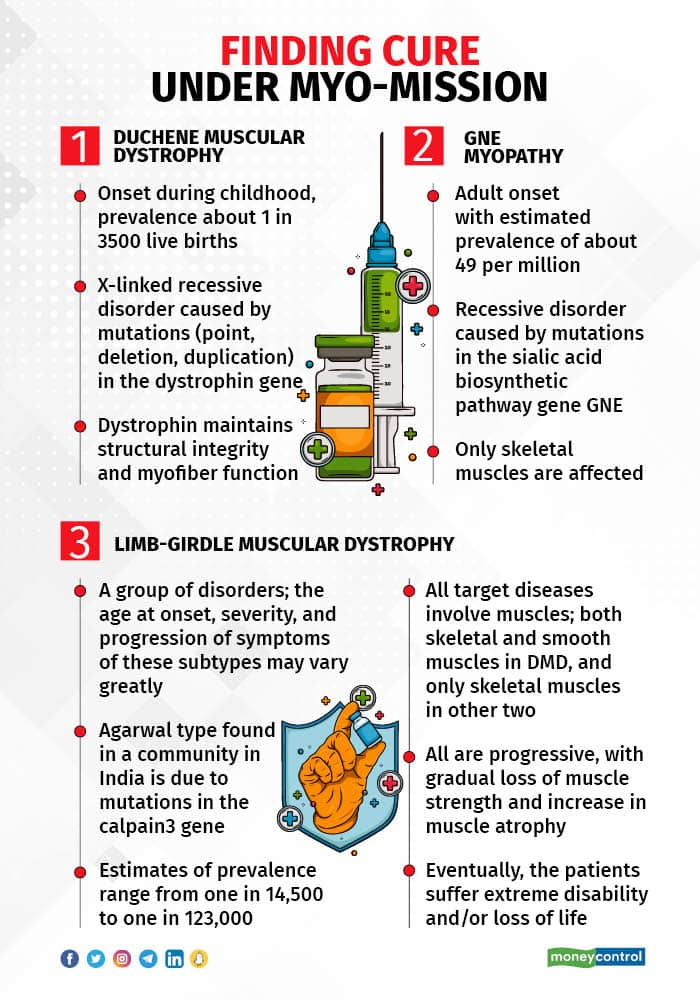Representative image
The Centre has approved a crucial collaborative project by a leading private university to find therapies for three types of rare diseases. Currently, the treatment available for these diseases is prohibitively expensive and out of the reach of needy patients in India.
The project will involve 21 institutions (including some top government-run centres), 53 investigators and 5 clinical centres collecting data. Sonepat-based Ashoka University, which is driving the project, has begun working on a nationwide programme to decode rare diseases and find a treatment for specific muscle-degeneration diseases.
Rare diseases, also referred to as orphan diseases, are mostly rooted in genetic defects, and have an occurrence of 1 or less per 10,000 people, resulting in lower investments in research.
Worldwide, about 7,000 of the rare diseases have been recognised, of which nearly 500 have been identified in India. About 7 crore people in the country are believed to be afflicted by these diseases, based on estimates by researchers from outside India.

Leading biologist Alok Bhattacharya, a faculty member at Ashoka who is leading the project, titled Myo-Mission, said that the Centre’s Department of Biotechnology has given greenlighted pre-clinical studies to develop therapies for the three diseases through multiple approaches, such as gene, small molecule and messenger RNA therapies.
The three diseases, which are rooted in muscle, put together affect an estimated 11 lakh people in the country and have been chosen for research as many of the methods, techniques and tools in drug development to combat them are expected to be the same.
“Developing therapy means we have to do a number of other things, which means not only working in a lab but having systems to test therapeutic molecules and having animal models to test them and eventually take them towards the clinical side,” Bhattacharya said.
He also pointed out that for rare diseases in India, diagnosis beyond a few major centres is difficult and even after diagnosis nearly 95 percent of the ailments do not have a treatment.
“In the case of 5 percent of the diseases, where treatment may be available, the cost is very high except for a handful of them, and runs into lakhs and crores of rupees per year,” Bhattacharya said. Needless to say these treatments are out of the reach of most Indians.
“Most drugs are made abroad and since there are fewer patients, the cost is especially very high. For instance, one of the drugs costs more than Rs 2 crore,” he explained.
Joint efforts
As part of the mission, said Bhattacharya, researchers from his university are interacting with patient groups through clinical centres.
These groups, which will also help in data collection related to the project, would be crucial to get patients to participate, he added.

“Apart from collecting data, carrying out analysis and building mathematical models, we will have some scientists and researchers looking at the possible defects for these diseases,” said Bhattacharya.
The models will look at why mutations in these genes cause defects. Researchers at institutes such as the Indian Institute of Science Education and Research, Pune, Council for Scientific and Industrial Research — Institute of Integrative Biology, Delhi, and Regional Centre for Biotechnology, Faridabad, will also work on animal and cellular models.
Industry participation
According to Bhattacharya, while no pharmaceutical company is involved in the first phase of the project and the focus is only on pre-clinical or lab-based studies, a couple of years down the line, initiatives that come up with good models will be taken forward.
Some industry representatives, too, said that there is a strong need for academia-industry participation to develop affordable drugs for orphan diseases.
“While India has a progressive health policy, laying great emphasis on the diagnosis and prevention of rare diseases, there is a need to strengthen research and development initiatives to advance viable treatment options for patients,” said Ruchi Sogarwal, head of public affairs and patient advocacy at Takeda Biopharmaceuticals India Private Limited.
She added, “…we believe that industry-academia collaborations can lead to breakthroughs in therapeutic interventions for patients and towards one common goal of universal health care for all in the country.”